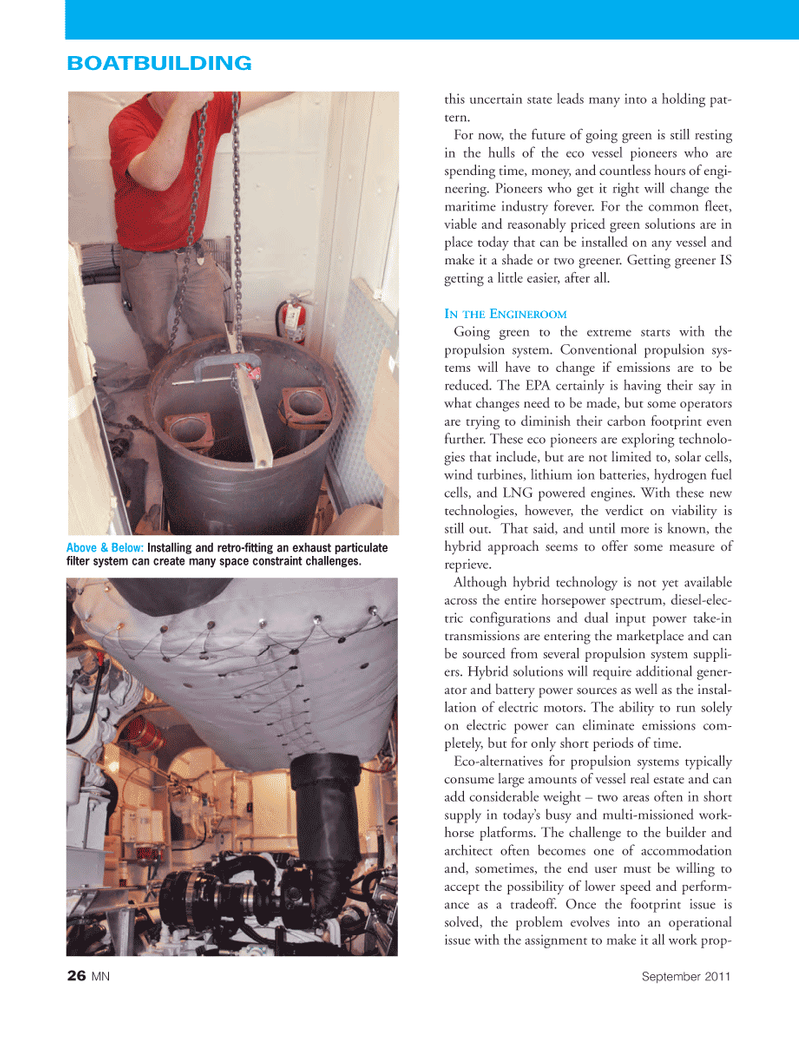
Page 26: of Marine News Magazine (September 2011)
The Environmental Edition
Read this page in Pdf, Flash or Html5 edition of September 2011 Marine News Magazine
26MNSeptember 2011this uncertain state leads many into a holding pat- tern.For now, the future of going green is still resting in the hulls of the eco vessel pioneers who are spending time, money, and countless hours of engi- neering. Pioneers who get it right will change the maritime industry forever. For the common fleet, viable and reasonably priced green solutions are in place today that can be installed on any vessel and make it a shade or two greener. Getting greener IS getting a little easier, after all. INTHE ENGINEROOM Going green to the extreme starts with the propulsion system. Conventional propulsion sys- tems will have to change if emissions are to be reduced. The EPA certainly is having their say in what changes need to be made, but some operatorsare trying to diminish their carbon footprint even further. These eco pioneers are exploring technolo- gies that include, but are not limited to, solar cells, wind turbines, lithium ion batteries, hydrogen fuel cells, and LNG powered engines. With these new technologies, however, the verdict on viability is still out. That said, and until more is known, the hybrid approach seems to offer some measure of reprieve. Although hybrid technology is not yet available across the entire horsepower spectrum, diesel-elec- tric configurations and dual input power take-in transmissions are entering the marketplace and can be sourced from several propulsion system suppli- ers. Hybrid solutions will require additional gener- ator and battery power sources as well as the instal- lation of electric motors. The ability to run solely on electric power can eliminate emissions com- pletely, but for only short periods of time. Eco-alternatives for propulsion systems typically consume large amounts of vessel real estate and can add considerable weight ? two areas often in short supply in today?s busy and multi-missioned work- horse platforms. The challenge to the builder and architect often becomes one of accommodation and, sometimes, the end user must be willing toaccept the possibility of lower speed and perform- ance as a tradeoff. Once the footprint issue is solved, the problem evolves into an operational issue with the assignment to make it all work prop- BOATBUILDING Above & Below:Installing and retro-fitting an exhaust particulate filter system can create many space constraint challenges.MN#9 (18-31):MN 2011 Layouts 9/6/2011 4:21 PM Page 26

 25
25

 27
27
